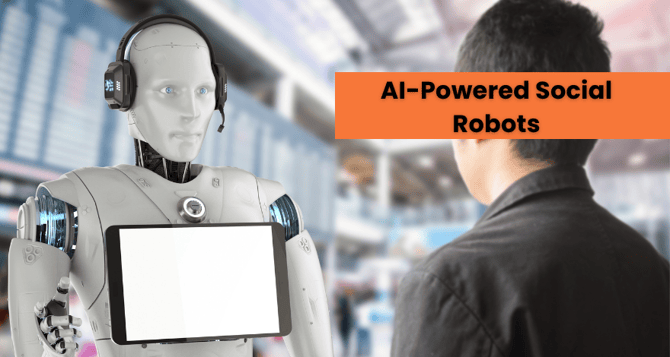AI-Powered Social Robots: Enhancing Human-Robot Interaction
This explores the integration of artificial intelligence into social robots to improve and enrich interactions between humans and robots. The focus is on leveraging AI technologies to enhance the social capabilities of robots, fostering more natural and meaningful engagement with humans.

The integration of Artificial Intelligence (AI) into robotics, marked by openAI developments, is ushering in a new era of social robots that can interact with humans in meaningful and adaptive ways. These AI-powered social robots have the potential to revolutionize various domains, from healthcare to education. In this article, we'll explore the significance of AI in social robotics and provide detailed technical implementations using Node.js.
The Rise of AI in Social Robotics
Social robots go beyond traditional robotic functionalities. They are designed to engage with humans in social and emotional contexts, making them valuable companions and assistants in various settings. AI plays a pivotal role in enabling these robots to understand, respond to, and even anticipate human emotions and behaviors.
Building an AI-Powered Social Robot System with Node.js
Let's delve into the technical aspects of creating an AI-powered social robot system using Node.js. In this example, we'll focus on implementing a social robot capable of natural language understanding and emotional response.
Node.js Implementation
1. Set Up Your Development Environment
Begin by setting up your Node.js development environment and installing the required packages.
2. Create an Express Server for Natural Language Processing
Set up an Express.js server to handle requests related to AI-driven natural language understanding.
3. Run Your App
Run your Node.js server using the following command:
Your AI-powered social robot system should now be accessible at `http://localhost:3000/process-text` or the specified port.
Applications of AI-Powered Social Robots
1. Companion Robots:
Provide companionship and emotional support to individuals, especially in healthcare settings.
2. Educational Assistants:
Assist in education by engaging with students in interactive and personalized learning experiences.
3. Customer Service Representatives:
Enhance customer service by understanding and responding to customer inquiries.
4. Therapeutic Companions:
Act as therapeutic companions for individuals with mental health challenges.
Considerations and Best Practices
1. User Privacy:
Implement robust privacy measures to protect user data and conversations.
2. Ethical AI:
Ensure that the AI algorithms align with ethical guidelines and respect cultural sensitivities.
3. Human-Robot Interaction Design:
Collaborate with UX/UI designers to create intuitive and comfortable interactions.
4. Continuous Learning:
Train the AI models regularly to adapt to evolving social dynamics.
5. Safety Protocols:
Implement safety measures to ensure the physical and emotional well-being of users.
Conclusion:
AI-powered social robots mark a transformative era in human-robot interaction, promising a future where machines adeptly understand and respond to our emotions. Leveraging Node.js and advanced AI techniques, developers can contribute to the creation of robots with applications ranging from healthcare to education.
Elevate Your Business with Custom AI Solutions
Our AI development services offer a tailored approach to meet your specific business needs. Let's discuss your project today!
While these robots bring immense potential, ethical considerations such as user privacy, adherence to guidelines, and thoughtful human-robot interaction design are crucial. As we navigate this evolving landscape, the collaboration between humans and social robots holds the promise of redefining our relationship with intelligent machines, enriching various aspects of our lives.



.png?width=344&height=101&name=Mask%20group%20(5).png)






%20with%20OpenAI%20Language%20Models.png?width=352&name=Robotics%20Process%20Automation%20(RPA)%20with%20OpenAI%20Language%20Models.png)









